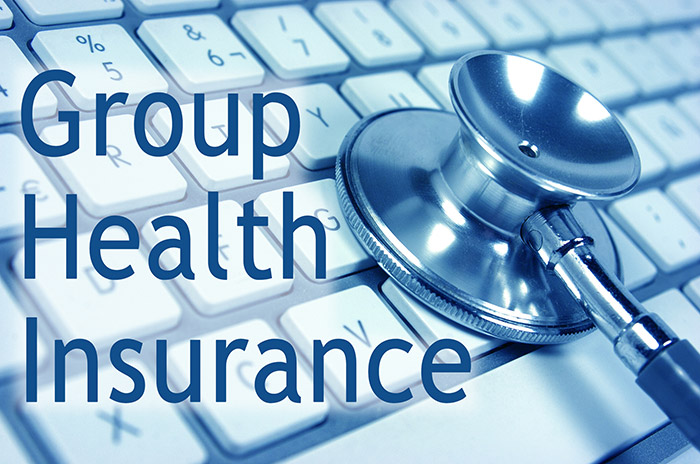The Greatest Guide To Pacific Prime
The Single Strategy To Use For Pacific Prime
Table of ContentsThe Buzz on Pacific PrimePacific Prime Fundamentals ExplainedWhat Does Pacific Prime Do?Not known Details About Pacific Prime Pacific Prime for Beginners

This is since the data were collected for a duration of strong economic performance. Of the approximated 42 million individuals who were uninsured, just about about 420,000 (concerning 1 percent) were under 65 years of age, the age at which most Americans end up being eligible for Medicare; 32 million were grownups between ages 18 and 65, around 19 percent of all grownups in this age group; and 10 million were youngsters under 18 years old, about 13.9 percent of all children (Mills, 2000).
These estimates of the number of persons without insurance are produced from the annual March Supplement to the Existing Populace Study (CPS), conducted by the Census Bureau. Unless otherwise kept in mind, national price quotes of people without wellness insurance policy and percentages of the population with different kinds of protection are based on the CPS, one of the most extensively used source of quotes of insurance protection and uninsurance rates.
An Unbiased View of Pacific Prime

Still, the CPS is especially valuable because it produces yearly estimates relatively quickly, reporting the previous year's insurance coverage estimates each September, and because it is the basis for a regular collection of quotes for greater than 20 years, permitting for evaluation of trends in coverage over time. For these reasons, along with the considerable use the CPS in other studies of insurance policy protection that are presented in this record, we count on CPS estimates, with constraints kept in mind.

The price quote of the number of without insurance individuals expands when a populace's insurance policy status is tracked for numerous years. Over a three-year period starting early in 1993, 72 million people, 29 percent of the U.S. https://telegra.ph/Pacific-Prime-Your-Trusted-Source-for-International-Health-Insurance-04-02. populace, lacked insurance coverage for at the very least one month. Within a single year (1994 ), 53 million individuals experienced at least a month without coverage (Bennefield, 1998a)
Six out of every review 10 uninsured grownups are themselves utilized. Although working does boost the chance that a person and one's member of the family will have insurance, it is not a guarantee. Even participants of families with two permanent wage income earners have almost a one-in-ten possibility of being uninsured (9.1 percent without insurance rate) (Hoffman and Pohl, 2000).
The smart Trick of Pacific Prime That Nobody is Talking About
New immigrants account for a significant proportion of people without medical insurance. One analysis has actually attributed a considerable section of the recent development in the dimension of the U.S. uninsured population to immigrants that arrived in the country between 1994 and 1998 (Camarota and Edwards, 2000). Current immigrants (those that involved the United States within the past four years) do have a high price of being without insurance (46 percent), yet they and their children represent just 6 percent of those without insurance coverage across the country (Holahan et al., 2001).
The partnership between medical insurance and accessibility to care is well developed, as recorded later on in this phase. The relationship in between wellness insurance coverage and health and wellness outcomes is neither direct nor simple, an extensive scientific and wellness solutions research study literature links wellness insurance coverage to better accessibility to care, better quality, and boosted individual and population wellness condition.
Levels of analysis for taking a look at the effects of uninsurance. This discussion of wellness insurance policy protection focuses largely on the united state populace under age 65 because practically all Americans 65 and older have Medicare or various other public protection. Furthermore, it concentrates especially on those with no wellness insurance coverage for any size of time.
A Biased View of Pacific Prime
The problems dealt with by the underinsured are in some areas comparable to those encountered by the without insurance, although they are typically less serious. group insurance plans. Uninsurance and underinsurance, however, entail clearly various plan problems, and the methods for resolving them might vary. Throughout this research study and the five reports to adhere to, the main focus gets on individuals without any health and wellness insurance policy and hence no help in paying for healthcare beyond what is readily available through charity and safety and security internet organizations
Medical insurance is an effective variable impacting receipt of treatment due to the fact that both individuals and doctors respond to the out-of-pocket rate of services - https://experiment.com/users/pacificpr1me. Medical insurance, nonetheless, is neither needed neither adequate to gain access to clinical solutions. Nevertheless, the independent and direct effect of medical insurance protection on access to health and wellness services is well established.
Others will certainly acquire the health treatment they need also without medical insurance, by spending for it expense or seeking it from providers who provide care totally free or at very subsidized rates. For still others, medical insurance alone does not make sure receipt of care due to the fact that of other nonfinancial obstacles, such as a lack of healthcare service providers in their area, limited accessibility to transport, illiteracy, or linguistic and social distinctions.
Getting The Pacific Prime To Work
Official research about uninsured populations in the USA dates to the late 1920s and early 1930s when the Committee on the Cost of Treatment created a series of reports regarding financing physician workplace gos to and hospitalizations. This problem ended up being prominent as the varieties of clinically indigent climbed throughout the Great Clinical depression.